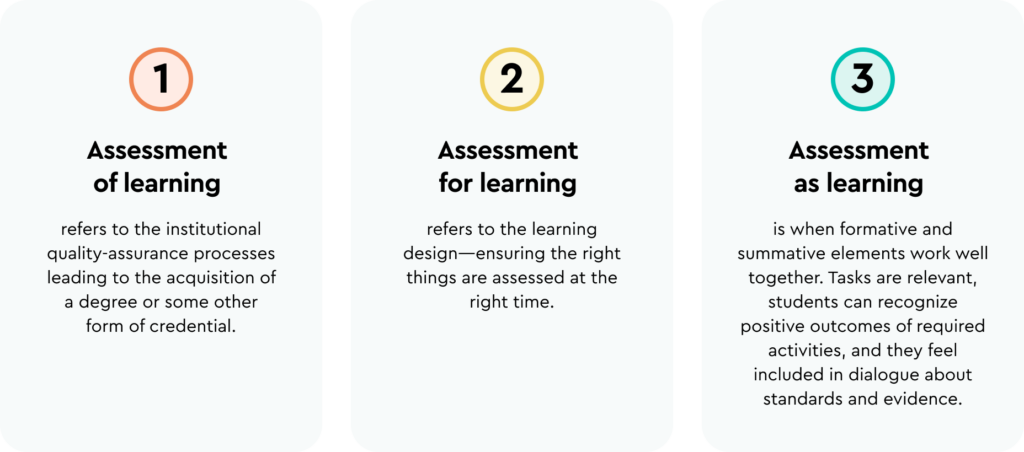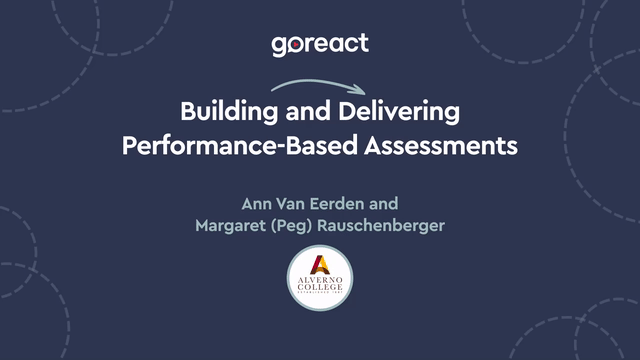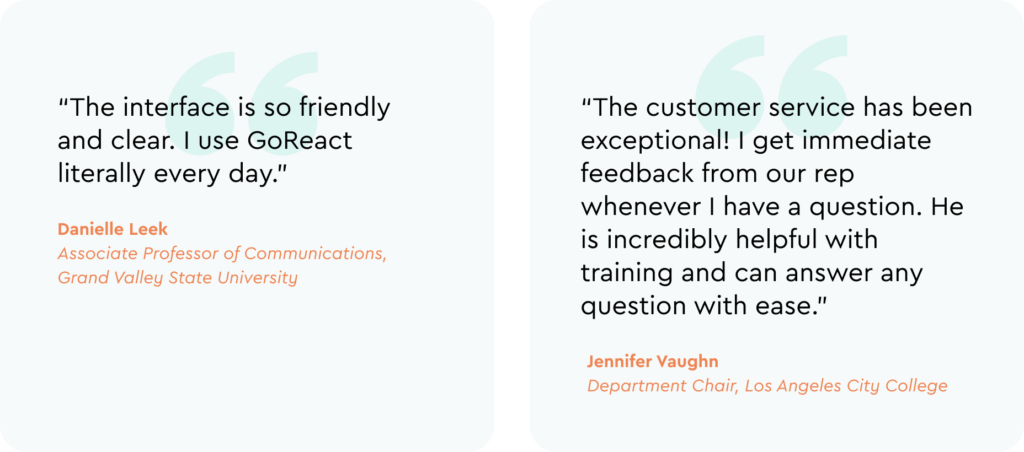Recently, a panel of experts from Jisc (a UK-based digital, data, and technology agency focused on tertiary education, research, and innovation) and Warwick University participated in a webinar on reframing assessment, hosted by GoReact and EdQuarter magazine. Many of the findings that follow are lifted from that conversation.
Prior to the pandemic, student evaluation in higher education looked very different. Assessment of knowledge and competency was largely accomplished through exams, written assignments, and the like. When COVID happened, universities were forced to pivot quickly, from in-person to online instruction and assessment. They soon recognized that former assessment strategies would not work in a digital space.
Many universities were forced to shift toward digital assessment solutions. Post-COVID, they’re continuing on that journey, further refining and enhancing ways to digitally support assessment. This move has resulted in many students, particularly those who are disadvantaged, performing better. Now that we’re beyond the throes of a global emergency, it’s the perfect time for educators to review and optimize assessment practices.
Assessment and feedback go hand in hand. So it follows that educators have also begun to rethink the ways that technology can improve feedback for students. It’s essential to ensure that students understand academic integrity, the purpose of assessment, and the need to engage with feedback more frequently and effectively throughout the course of their studies. Old methods of assessment have become obsolete; however, the challenge is to keep seasoned faculty on a continued path of innovation.
Assessment Three Ways
If we’re looking to optimize assessment practices, we must first consider how to balance three distinct assessment approaches. These assessment types are equally essential; but the relationship between them varies by situation:

For a number of years, assessment and feedback practices have been on a trajectory away from assessment of learning, and toward assessment for learning, with the goal of ensuring that feedback results in future improvement.
These days, the greatest emphasis in higher ed seems to be on assessment as learning. Feedback plays a large part in helping students manage their own learning. In fact, the act of undertaking assessment and feedback is an essential part of the learning process.
For more information about assessment as/for/of learning, check out this video clip.

Characteristics of Effective Assessment
During the aforementioned webinar hosted by GoReact and EdQuarter, University of Warwick Director of Education Innovation Graeme Knowles suggested that assessment should be integrative, i.e. it should require students to draw on various aspects of their learning journey. Knowles added that assessment should promote students’ deeper reflection—about the material itself, how they approach the assessment, and how they approach learning in general. Warwick offers many degree apprenticeship programs, through which students/apprentices are employed in the real, working world. And Warwick educators prioritize ensuring that the way they assess results in something useful to their students’ future professional lives.
In addition to Warwick’s suggestions, Jisc has developed this useful (paraphrased) list of principles for assessment and feedback to help improve learning, teaching, and evaluation:
- Help students understand what “correct” looks like by explaining the requirements and expectations for each task.
- Support learners’ individual needs with accessibility, inclusivity, and compassion.
- Promote active learning and formative development through engagement with resources, peers, and tutors.
- Empower autonomous learners by encouraging self-reflection, regulation, and feedback; dialogue; and peer review.
- Help manage staff and student workload, using the right assessments, at the right time, supported by efficient processes.
- Inspire a motivated learning community, involving students in decision-making and inviting staff to critique and develop their own practice.
- Promote students’ marketability by practicing and evaluating real-world tasks and promoting ethical behavior.
Where Does Video Fit in?
While there are numerous digital tools for assessment and feedback practice, video has become a desirable solution, supporting many of the principles mentioned above.
Summative and Formative Assessment
In higher ed, most courses are built around summative assessments: final exams, final projects and final opportunities to demonstrate an entire unit, semester or year’s worth of learning. The problem with this approach is its finality. Summative assessment evaluates the end of learning over time without accounting for the progression of learning over time.
In contrast, formative assessment not only measures, but also helps improve learning and skill development throughout the term. Instructors may steer away from this approach because it can be time-consuming or difficult to implement.
One solution for both of these challenges is video. Using video for formative assessment gives instructors a fast and flexible way to monitor student progress and promote their success—through targeted feedback, personalized learning, and self/peer evaluation—so they know where to focus their efforts when it’s time to prepare for final exams.

Benefits of Video
Using video for assessment solves the challenges of travel, time, budget, and distance. Video allows a variety of stakeholders from different locations to view and assess a demonstration, either live or after the fact.
As an added bonus, once a video is created, it can be reviewed repeatedly for self-reflection and shared for peer and instructor review. It becomes an established educational resource.
In the past, university students who demonstrated skills could count on delayed feedback via pen and paper. Nowadays, students can see that feedback in the very context of what they’re demonstrating. Specific and targeted feedback synced with the performance of a specific skill or competency allows learners to implement suggested changes much more quickly and deliberately.
Warwick educators’ research shows the importance of students having authentic, real-world experience. Ensuring that educators are assessing the skills and knowledge that will be required of students when they move out into the workplace is essential. Demonstrating skills via video for assessment and feedback makes competency-based learning simpler and easier.
Students value the personalization inherent in video feedback, as well as its timeliness and relevance. Research done by Jisc and a recent report published by the Higher Education Policy Institute (HEPI) indicate that students typically evaluate feedback quality as lacking. The more educators enhance the timeliness and specificity of feedback to help students improve—rather than providing generic comments—the more students feel engaged in and aware of what’s being assessed.
Is Investing in New Tech for Video + Feedback Worth It?
When considering the implementation of any new technology or assessment strategy, our advice to educators is to always start with the question “why?” Why are we doing this? Why is this worthwhile? What’s the benefit to our students and staff? This will position you to think through your approach—instead of just requiring a new piece of technology and asking everyone to sort it out. If we were to design the ideal way for university students to learn, and consider how assessment and feedback fit into that design, the benefit of video emerges as undeniable. Framing video assessment and feedback through this lens can prevent the adoption of new associated tech from being seen as an imposition on staff or students.
Take the Next Step With GoReact
If you’re ready to give your staff and students the gift of video + feedback for student assessment, consider GoReact. Our software puts enhanced experiential learning within reach—simply and easily—while saving your instructors’ time and your departments’ budget. Reach out today for a free demo to learn how GoReact can meet your specific needs.
Here’s what our customers are saying:










